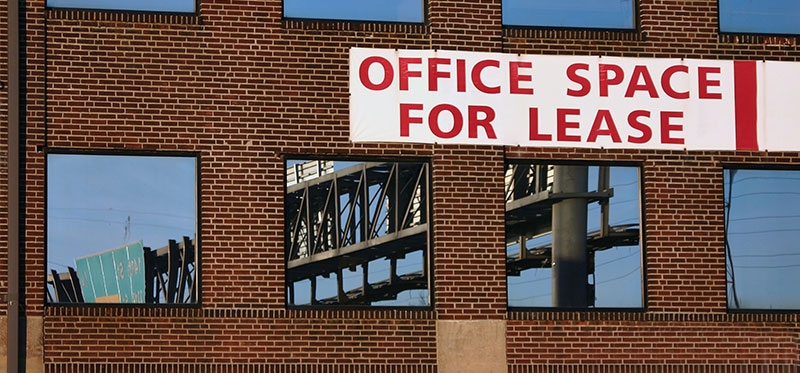One of the countless ways in which the COVID-19 pandemic has affected the Boston business community has been the impact on commercial office leasing. Companies large and small have had their employees working remotely for over a year, while their gleaming and cavernous downtown office spaces have laid fallow (and while their substantial rent obligations have, nonetheless, continued unabated). Having been forced to devise creative ways to operate without a central office location, and now seeing efficiencies created by those dispersed operations, companies are considering retaining, in varying degrees, elements of this new paradigm on a permanent basis. As a result of scaling down operations, companies are re-evaluating their needs for downtown office space, and in many cases determining that their current space exceeds those needs.
Companies need to be mindful of the provisions in their lease that govern their ability to sublease their space (or portions thereof).
Of course, if a company determines that it no longer has a need for (say) 25% of its current space, it cannot simply “give back” the space to their landlord and wash their hands of it. Many commercial office leases have terms of five (5), seven (7) or even ten (10) years, and the tenants are obligated to pay rent for their full spaces (whether or not they use them) until the end of the current terms of their leases. The alternative, of course, is for a tenant to sublease its excess space to another user (a subtenant), and earn sublease rent to offset its substantial rental obligations to their own landlord under the prime lease.
In this regard, companies need to be mindful of the provisions in their lease that govern their ability to sublease their space (or portions thereof). As outlined in further detail below, subleasing almost always requires the consent of the prime landlord, and there are usually a host of other requirements that must be met in connection with seeking and obtaining the prime landlord’s consent to a sublease. While (as always) the specific requirements, and level of detail of those requirements, will vary from lease to lease, the following is a summary of common terms and conditions of which a company seeking to sublease their space should be aware:
1. Prime Landlord’s Consent. With relatively few exceptions, a tenant’s right to sublease its space is subject to the prior written consent of the landlord. In most cases, the landlord agrees that its consent will not be unreasonably withheld. However, in more detailed leases, there are provisions identifying specific circumstances under which the landlord’s denial of consent will be “deemed” to be reasonable. One such situation that is almost universal is that the tenant cannot be in default at the time it seeks landlord’s consent to the sublease. Other situations focus on the identification and characteristics of the proposed subtenant. It is common, for instance, for the lease to provide that landlord’s denial of consent will be reasonable if the proposed subtenant; (1) does not meet certain minimum financial criteria, (2) is another tenant in the same building, or (3) is a party with whom Landlord has been dealing directly with respect to leasing other space in the same building. In some particularly landlord-oriented leases, there can be criteria that are open to the landlord’s subjective judgment (e.g., if, in the landlord’s judgment, the proposed subtenant or its business are not “consistent with” with the character, standards or reputation of the building). Those types of discretionary standards effectively give the landlord the sole discretion to grant or deny the sublease request.
2. Request/Submission Requirements. Many leases require the tenant to submit various types of documentation as a threshold matter before the landlord will even give substantive consideration to the sublease request. In almost all cases, the sublease request must be in writing, and contain the basics of the proposed sublease—e.g., the identity of the proposed substant, the specific space to be subleased, the dates and term of the proposed sublease, and the basic rent and financial terms. In cases where the subtenant’s financial strength is one of the sublease criteria, the lease will also require the tenant to provide financial statements and/or other evidence of the subtenant’s financial condition. In some cases, the lease language will require submission of the actual proposed form of sublease. As these submission requirements vary from lease to lease, it is important for the tenant (or its attorney) to review the sublease provisions of the lease to identify all of the documentation and other requirements to be met for submission of a request to the landlord for consent to a sublease.
3. Landlord Recapture Rights. Many leases include what are called landlord “recapture” rights, whereby if tenant makes a request to sublease all or a portion of its space, the landlord has the right to take back possession of the subject space and terminate the lease with respect to such space. Under the current environment where tenants are seeking to downsize their spaces, a tenant would presumably welcome its landlord’s exercising of recapture rights, as the tenant would then be relieved of rent and other lease obligations attributable to such space. Of course, the corollary to this is that if there is a healthy inventory of sublease and other available space in the downtown market (and correspondingly less market demand for the subject space), the landlord is probably unlikely to exercise the recapture right.
4. Required Terms of Sublease. The lease may also require that certain terms be incorporated into the terms of the sublease, as a condition of the landlord’s consent. For example, it is fairly common for the lease to require the subtenant to expressly agree to perform all of the obligations under, and to comply with the terms and conditions of, the prime lease as to the subleased space, and to acknowledge that it may not further sublease the space without first obtaining the prime landlord’s consent. Under some leases, the landlord may also want the subtenant to agree that, if instructed to do so by the prime landlord (e.g. in the event of a default of the prime tenant under the prime lease), to make its sublease rent payments directly to the prime landlord.
5. Sublease Profits. While it is fairly rare that the sublease rent payable by a subtenant is higher than the rent payable by the prime tenant under the prime lease (i.e., where the tenant will make a “profit” from the sublease), most leases will have a clause addressing the disposition of those sublease “profits”. Generally, the terms provide for the prime landlord and tenant to split the profits 50/50, but in more landlord favorable leases, the relevant provision may require the tenant to pay 100% of the sublease profits to the landlord.
6. Landlord Review Fees. Finally, tenants should also be cognizant of common provisions that require the tenant to pay for the landlord’s costs and expenses in reviewing and considering the tenant’s sublease request. Such costs usually at least include legal fees for the landlord’s lawyer to review the request and relate documents for compliance with the terms of the lease. But there are other potential costs, depending on the circumstances. For instance, if the sublease space will be separately demised, the landlord may incur fees for tis architect or engineer to review the proposed demising work plans. Notably, these review fees and costs are often stated to be payable to landlord, irrespective of whether the landlord actually ends up consenting to the requested sublease.


